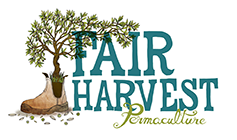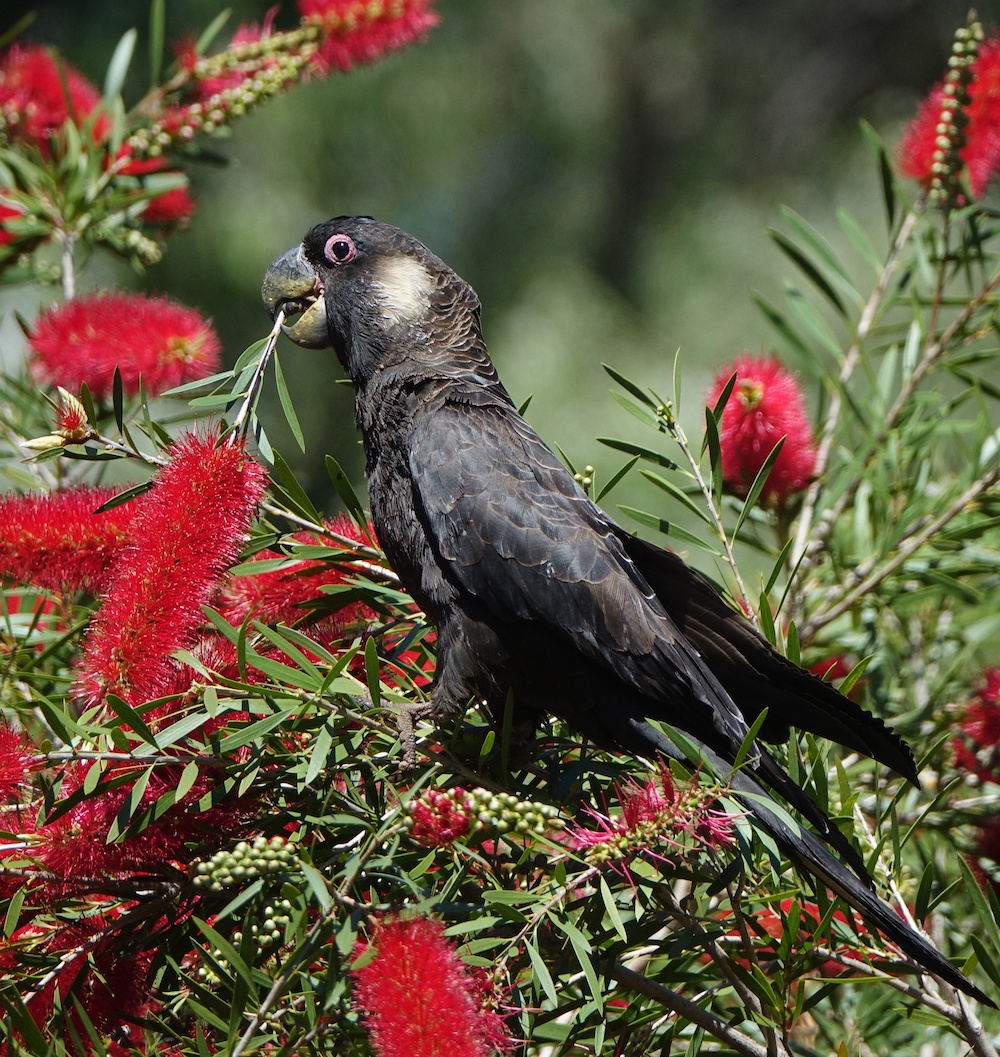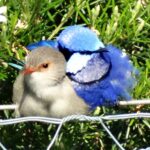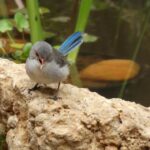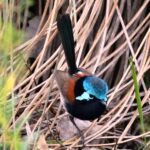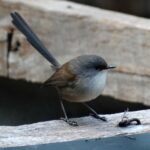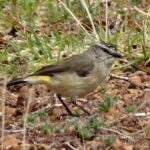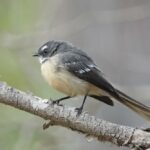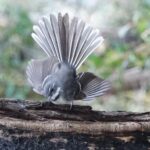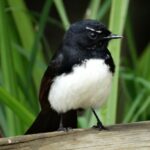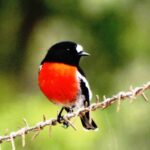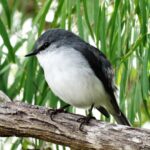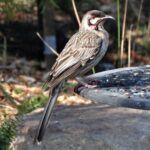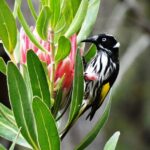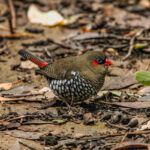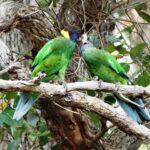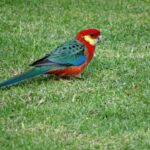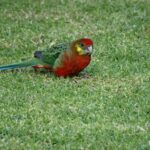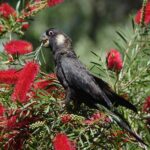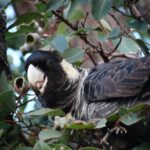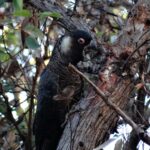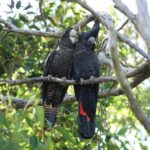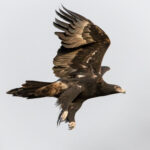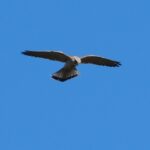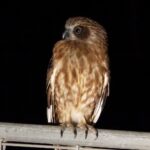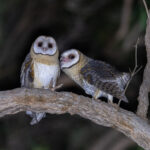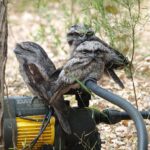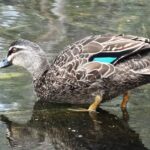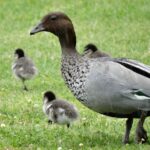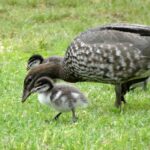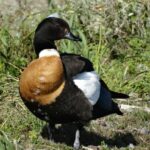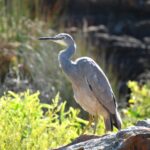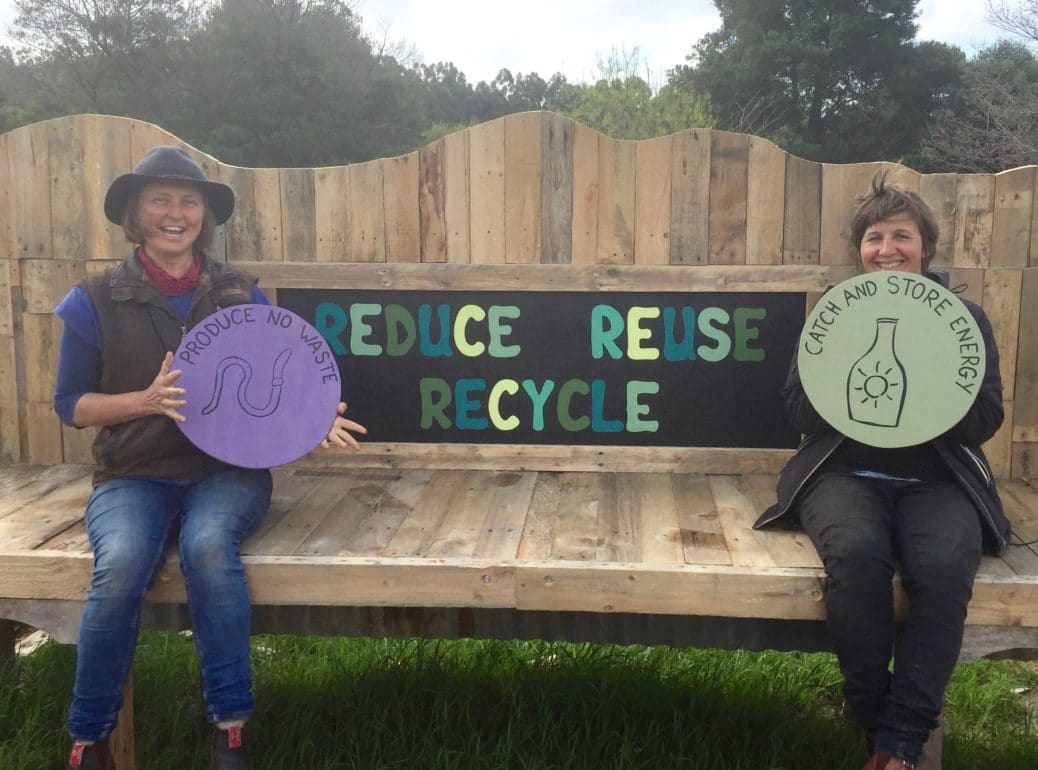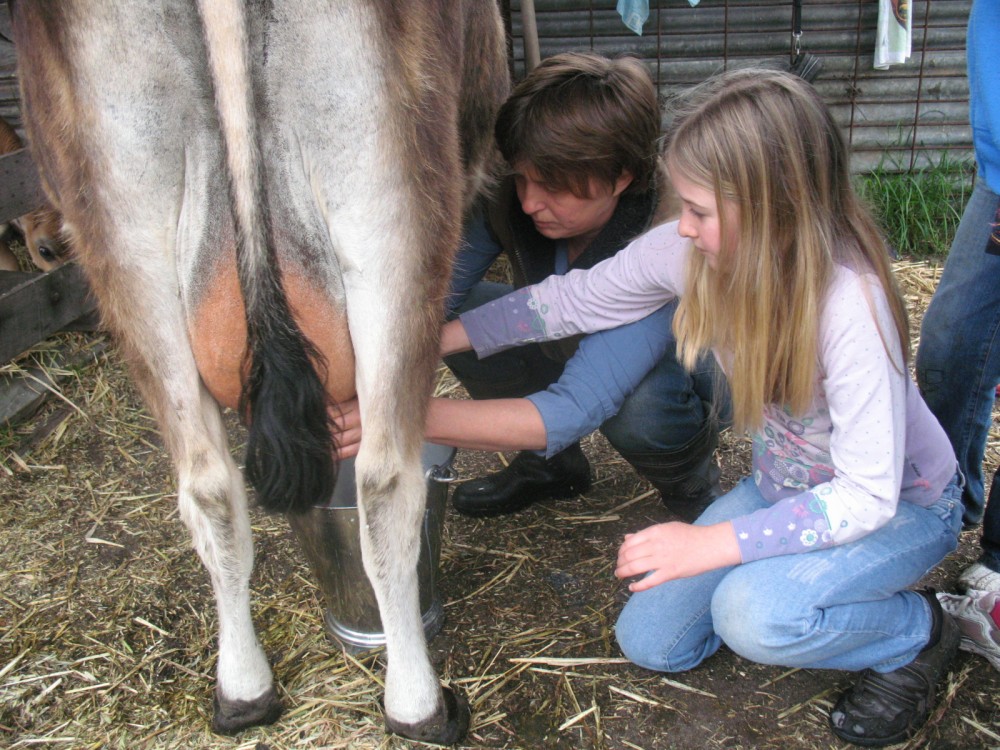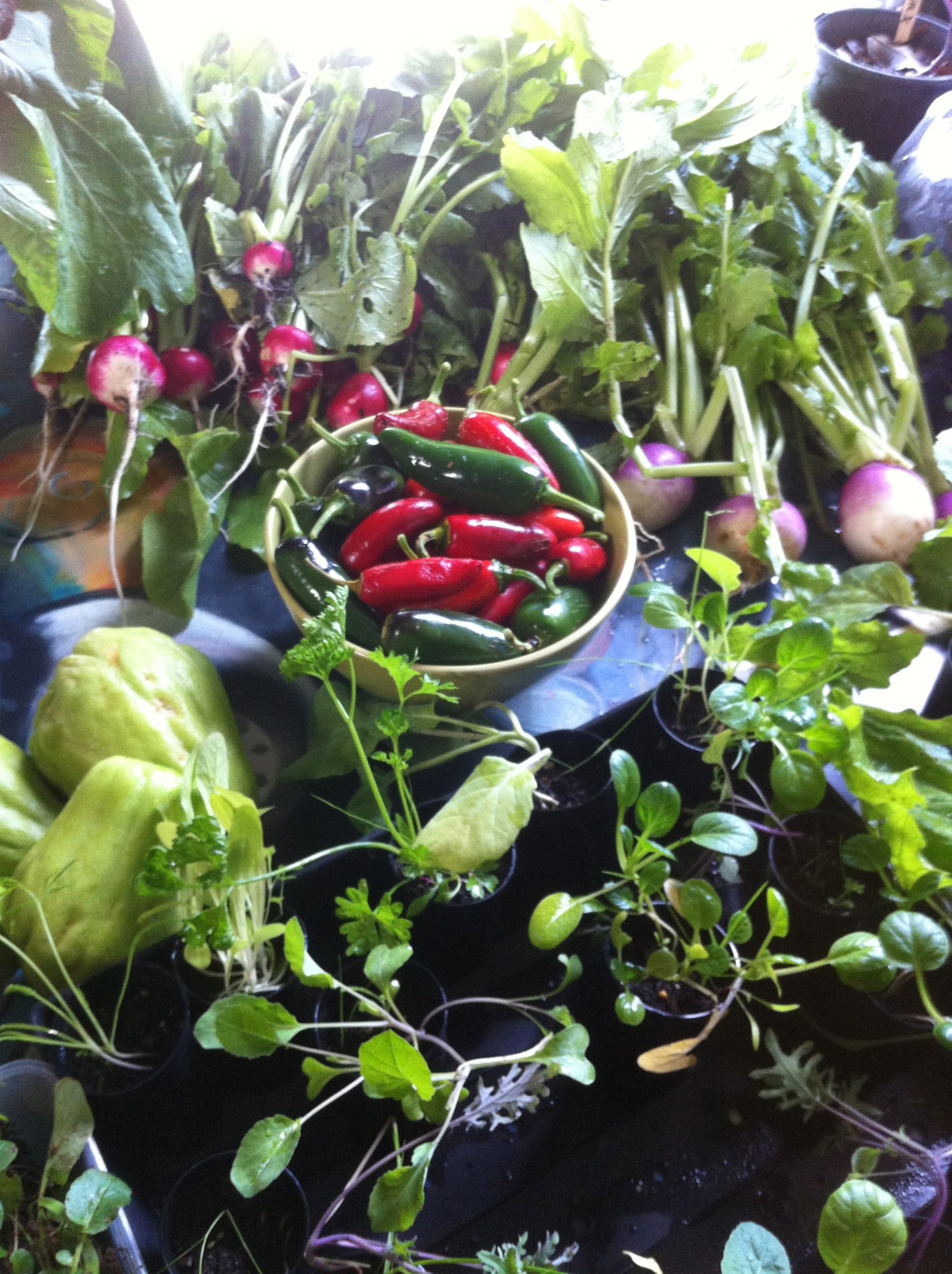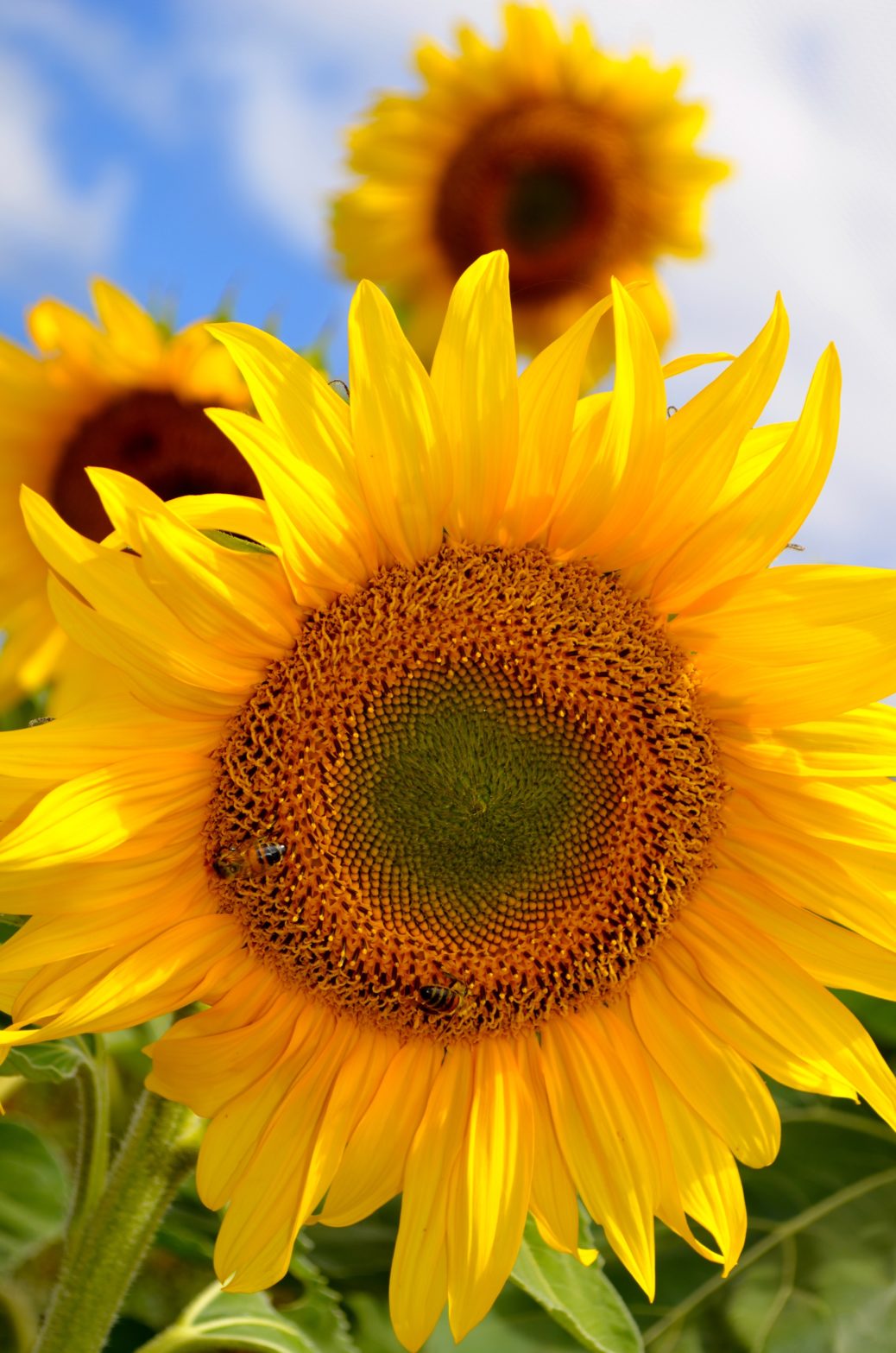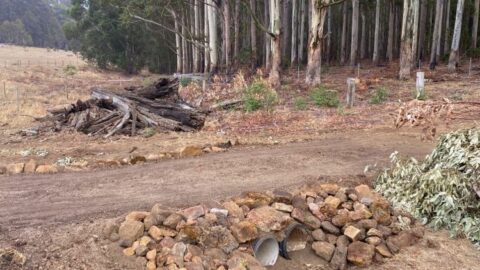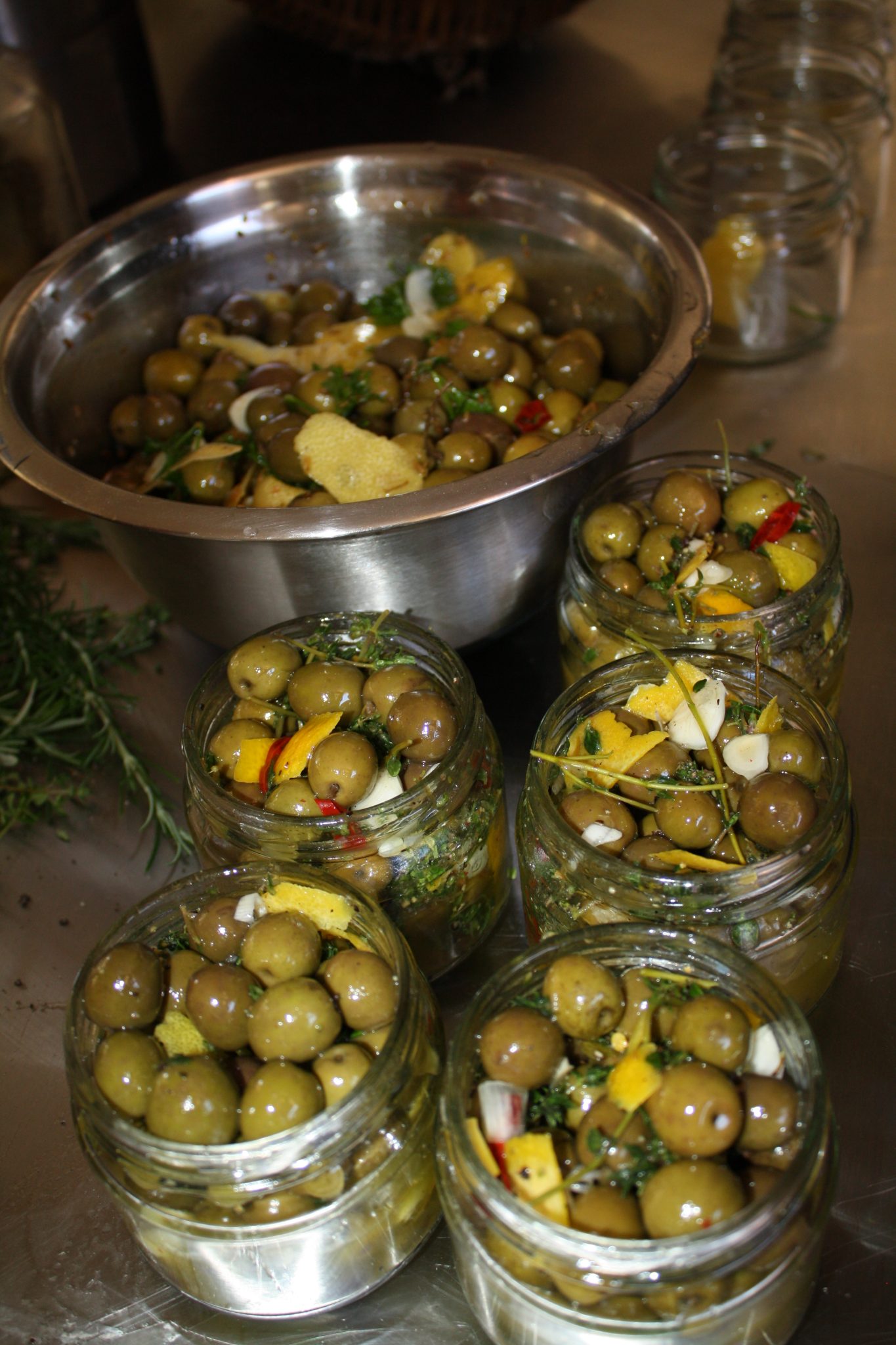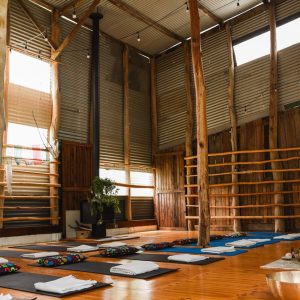Birdlife at Fair Harvest Permaculture
One of our favourite permaculture principles at Fair Harvest is to Use and Value Diversity.
Maintaining lots of healthy bush areas and having lots of different plants in the garden attracts a wide variety of birds. These help us in so many ways – controlling bugs, pollinating plants, spreading seed and fertilising the soil. And of course, they are beautiful to see around us sharing this space.
There are more than 60 bird species that visit or live at Fair Harvest. Here are just some of the common ones.
Thanks Rod Hughes for the text and Boyd Wykes for the beautiful pics
The Little Guys
You will often see these types of birds flying low between the bushes or hopping about the ground in search of food.
Splendid Fairy-wren – Tjuringa Malurus splendens
You can hardly miss the male Splendid Fairy-wren in his breeding plumage. These tiny birds dressed up in spectacular blues, violet and black live in family groups of brown-plumaged females and non-breeding males. Fairy-wrens spend their time foraging on the ground for insects and will quite often come close to humans.
Red-winged Fairy-wren – Djurjeelya Malurus elegens
Endemic to the southwestern corner of WA, the breeding male Red-winged Fairy-wrens are distinguished from Splendid wrens by iridescent silvery-blue on the crown and back as well as their red-brown shoulders. They prefer more bushy areas, where they can keep close to cover.
Yellow-rumped Thornbill – Miyamit Acanthiza chrysorrhoa
This ground feeder that is found across Australia has a noticeable short beak and bright yellow feathers on the rump. Groups of up to a dozen feed on insects and seed on open ground but always close to cover in trees and shrubs. Their large domed nests of grass built in the outer foliage of tall shrubs have multiple entrances to confuse predators.
Grey Fantail – Kadjinak Rhipidura albiscapa
Fantails are common residents at Fair Harvest. They are agile flyers, constantly on the move as they fan their tails and twist about. They are friendly birds, flying close to animals and visitors, on the look-out for disturbed flies and other insects.
Willie Wagtail – Willerin Rhipidura leucophrys
One of Australia’s best-known birds, with black plumage above and a white belly, noticeable whiskers and white eyebrows. They hunt for insects on the ground and in the air. Their neatly woven cup-nests are covered with spiders web and lined on the inside with grasses, hair and fur. Other well-known black and white birds from the open spaces at Fair Harvest are the larger Australian Magpie, Magpie-lark and Grey Butcherbird.
Scarlet Robin – Goolbajet Petroica multicolor
Generally spotted on fence posts and sitting in low branches of small trees, the male Scarlet Robin has a black head, neck and upper parts with a white patch above the bill and strikingly bright scarlet breast. The female is quite different, being brown above with a small whitish frontal patch and a pale orange-red breast. They fly down from perches to catch insects on or near the ground.
White-breasted Robin – Boydjil Eopsaltria georgiana
This plump, larger robin that is endemic to southwestern Australia has dark grey-blue feathers on top and white breast and lower body. It is usually quite shy – coming out into the open more often in the half-light of dawn and dusk. It clings to tree trunks and low branches and drops to the ground to catch prey. It’s a frequent visitor to the bird baths, where it can be a bit pushy.
The Honeyeaters
Flitting fast between the larger flowering shrubs, honeyeaters are chatty neighbours.
Red Wattlebird – Djoongong Anthochaera carunculata
These noisy characters of southern Australia are our second largest honeyeater (the Tasmanian Yellow Wattlebird being the biggest). They feed on nectar by probing flowers with thin curved bills and use that energy to snatch insects from the air. You will hear their harsh ‘yac a yac’ and a loud ‘chok’ backed up by aggressive attacks to defend any nectar sources against all other honeyeaters.
New Holland Honeyeater – Bandin Phylidonyris novaehollandiae
New Holland Honeyeaters are common across southern Australia from Perth up to Brisbane. They mostly eat nectar, darting from flower to flower in search of this high-energy food, but also eat fruit, insects and spiders. They also defend rich nectar sources against other honeyeater species, operating in large groups, and are regular visitors to birdbaths.
Red-eared Firetail Boorin Stagonopleura oculate
You may have to work a bit harder to spot these beautiful finches – there are pretty shy and quiet. Firetails generally forage on the ground, in grasses or shrubs. They eat seeds and very occasionally small insects. They forage singly or in small flocks, and occasionally in congregations comprising dozens of birds. Red-eared Firetails lay between three and six white eggs, which are incubated by both sexes.
[Photo: Brad Durrant]
Parrots and Cockatoos
Twenty-eight (Ringneck) Parrot – Dowarn Barnardius zonarius semitorquatus
Twenty-eight parrots are members of the Australian Ringneck group, found throughout in Australia. They have a black head, red forehead, and a dull green chest and abdomen. Moving about in pairs and small flocks, they have a wide diet of seeds, berries, nectar and insect larvae in their natural habitat, which has translated well into utilising our gardens and orchards. At Fair Harvest they can be a bit of a nuisance eating fruit but they are fun to watch extracting the seeds from dried artichoke flowers.
Western Rosella – Moyadong Platycercus icterotis
The Western Rosella is a smaller, shyer member of the parrot family that has also extended its habitat from open eucalypt forests into cultivated land and orchards. They mainly eat the seeds of grasses and other ground plants, as well as fruits, flowers, insects and their larvae. Like all parrots, Western Rosellas need nesting hollows in trees. That’s why it is so important that very old trees are left to develop hollow limbs – a process which can take hundreds of years.
Carnaby’s Black-Cockatoo – Ngoolaak Calyptorhynchus latirostris
These large black parrots once filled the skies in vast flocks but are now listed as endangered due to habitat loss, especially in the wheatbelt and Swan Coastal Plain near Perth, where they feed on seeds of the banksia family, as well as pine trees and orchard fruits. Many now come to our region in winter, and some stay to breed, taking advantage of pine plantations and introduced crop and weed plants in pastures, orchards and coastal dunes.
Baudin’s Black-Cockatoo – Ngloak Calyptorhynchus baudinii
Another large black parrot, Baudin’s cockatoos are specialists of the south-west forests where they are also listed as endangered. They nest in big hollows of karri and marri which are in short supply due to loss from clearing, logging fire and competition from introduced European bees. They live for 25–50 years, raising just one or two young every couple of years. They feed mainly on the seeds of eucalypts, acacias and marris, and in recent decades, apples and pears. They are slightly smaller than Carnaby’s Black-Cockatoos, with a longer upper bill. You may be able to tell their different calls: the Baudin’s make a ‘witch-a’ sound while Carnaby’s have a distinctly two-syllable ‘wee-loo’ call.
Forest Red-tailed Black-Cockatoo – Kaarak Calyptorhynchus banksii naso
This third of our large black cockatoos is another forest specialist, with a longer bill than its cousin of more inland woodlands. The males are glossy black except for the bright scarlet band near the tip of the tail and the bill is dark grey or blackish. Females and juveniles are black but the head and wing coverts are spotted with pale yellow and the breasts and belly are barred with orange-yellow. The tail is also barred with red and orange and the bill is greyish-white. Their call is the distinctive ‘kaarak’ of its Wadandi name.
Owls and Raptors
If you keep an eye to the sky we often get visits from the majestic Wedge-tailed Eagle and other high-flying hunters. You may be lucky to spot an owl hunting at night. Our local raptor care and education centre, Eagles Heritage is well worth a visit to experience these magnificent creatures at close quarters.
Wedge-tailed Eagle – Wolja Aquila audax
The ‘wedgie’ is Australia’s largest bird of prey and one of the biggest eagles in the world, with a wingspan that can reach 2.3m. You can identify them overhead by their wedge-shaped tails and their feathered legs. They have a home range of about 30-40 square kilometres but at times will cover vast distances if looking for new territory. Wedgies often fly at heights of about 1500m and have been recorded as high as 6900m above sea level. They mainly feed on rabbits, birds, lizards and on dead animals such as kangaroos and sheep. They mate for life and build massive nests in tall trees. Fair Harvest is within the range of one of the several pairs living around Margaret River.
Nankeen Kestrel – Mardiyet Falco cenchroides
This small falcon is often seen perching high in trees or hovering as it hunts, mainly for insects, small mammals, reptiles and small birds. The hovering hunting is great to watch as the kestrel beats its wings rapidly, using its fan-shaped tail as a rudder and keeping the head and body kept still. Once prey is spotted, the bird drops nearer to the ground until it is close enough to pounce. Some insects and birds may be caught in mid-air or snatched from tree branches. The Black-shouldered Kite is the other local, small, hovering raptor, readily distinguished by black markings on an otherwise white body. [Photo (left): Patrick Kavanagh https://australian.museum/]
Southern Boobook – Goor-goor-da Ninox boobook
Also called the Mopoke, the Boobook is our most common owl, named for its distinctive, repeated call. These nocturnal raptors hunt insects, particularly beetles and small animals such as mice by listening and watching from a suitable tall perch. Once detected, flying prey, such as moths and small bats, is seized in mid-air, while ground-dwelling prey is pounced upon. They breed in spring, with access to the many small tree hollows that we are fortunate to still have in the marris and karris of our forest reserves and waterways.
Masked Owl – Yornitj Tyto novaehollandia
This is Australia’s largest owl and there is a surprisingly abundant population around Margaret River. Near Fair Harvest a pair nests in a huge hollow of an ancient karri, one of the first ever nests documented in southwest WA. Their rasping screech is not easily forgotten but near their nests they communicate with chatters and chuckles. They are mostly only seen as just a ‘huge white bird’ flying in car headlights, with many killed as a consequence. These beautiful white-fronted owls have heart-shaped, facial masks. They often perch on low limbs watching and listening for prey below. The owls’ diet includes mice, rats and rabbits and this puts them at risk of secondary poisoning from eating prey which has eaten toxic baits.
Masked Owls pairs mate for life, starting courtship close to their chosen nest hollow in autumn. They lay their clutches of one to four eggs in winter-spring and care for their young right through the summer. The Masked Owl’s smaller relative, the Barn Owl, is also found around Fair Harvest, in more open paddock areas.
Tawny Frogmouth – Kombegaar Podargus strigoides
Tawny Frogmouths are nocturnal and look a bit like owls but they are unrelated and very different – for example they build their own nests, which are flimsy platforms of twigs on horizontal limbs. The Wadandi name Kombegaar means ‘big-mouth’. They are remarkably well camouflaged but if you look hard they can be found during the day perching alone or in family groups on low tree branches. Tawny Frogmouths eat insects and other small animals such as mice and frogs. Their call is a soft, deep and continuous low oom oom oom.
The Waterlovers
The dams at Fair Harvest attract a great range of waterbirds which use the area for feeding and swimming.
Pacific Black Duck – Yet Anas superciliosa
This duck is common across Australia. Despite its name, it has a dark brown body with distinctive white eyebrow and facial stripes. Black Ducks are a ‘dabbling’ duck, meaning they feed by plunging their head and neck underwater and raising their rear end vertically out of the water. They mainly eat plants but also aquatic insects, crustacea and molluscs. They usually nest in tree hollows, as do Wood Ducks and Shelducks.
Australian Wood Duck – Marangana Chenonetta jubata
This is a medium-sized ‘goose-like’ duck with a dark brown head and a pale grey body with two black stripes along the back. Males have the darker head and a small dark mane, with a speckled brown-grey breast and a black lower belly and undertail. The females have a paler head with two white stripes, above and below the eye, a speckled breast and flanks, with a white lower belly and undertail. They are more often seen in groups feeding on grass near water than on the dams and pools themselves.
Australian Shelduck – Nyimarak Tadorna tadornoides
In winter, large unmistakably brightly coloured Shelduck (also known as Mountain Duck) breed in farmland around Margaret River. Females lead their freshly hatched nestlings from where they fall to the ground from tree-hollow nests to where the male has set up a territory on grass around dams and other wet areas. In flight together, the male and female exchange calls, the male giving a lower pitched honk than that of the female.
White Faced Heron – Jillee-milyun Egretta novaehollandiae
White-faced Heron are found in all kinds of waterways and marine areas right across Australia, New Zealand, New Guinea and beyond. They spend their time stalking and standing perfectly still around the farm dams hunting small fish, tadpoles, frogs and insects which they snatch with a dagger-like bill by extending their long necks. They have a slow, bouncing flight and often make a honking call when disturbed.
SOURCES AND ACKNOWLEDGMENTS
Unless otherwise noted, all photographs courtesy Boyd Wykes, Margaret River. Thanks also to Boyd for his amazing bird expertise.
Noongar Wadandi names
We have tried to include specific Wadandi names for birds species and are grateful for the help received. Some of the names used may be Noongar names but not local Wadandi. If you know the correct names, then please let us know.
https://www.birdsinbackyards.net/
https://www.simoncherriman.com.au/research/
Text by Rod Hughes
426 Carters Road
MARGARET RIVER WA 6285
